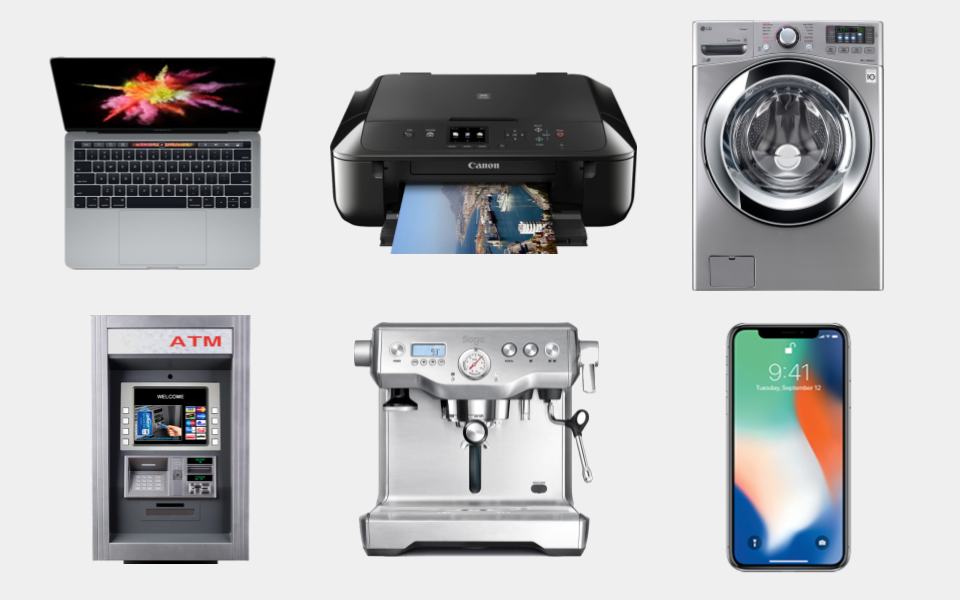What is user experience (UX) design, and how can it help my business grow?
A thought experiment
A collection of products and services that we use every day.
Take a moment to think about a product or service you depend on every day. Maybe it’s your kitchen stove, the parking lot, or mobile banking. Is it easy, effortless, and enjoyable to use? Why, or why not?
Examples of things not so well designed or thought out with the user in mind.
More often than not, the products and services that power our lives are poorly designed and frustrating to use. In the image above, we find doors that we don’t know if we should push or pull; toilets installed in an inconvenient location; street signs that are frustrating to understand; gear sticks that are illegible; and error messages that don’t tell us anything useful. Consumers today not only want products that work, but they will pay a premium for products that work well.
Often, small businesses prioritize shipping new features and launching their products without testing or getting feedback from their users. Small businesses often forget to ensure that all pain points—such as customer support, updating a password, or the on-boarding process—are fully addressed. As a result, businesses lose out on opportunities to engage with their current customers and win new ones. Even just one poor experience with a brand may turn a potential influencer away to a competitor.
What is user experience (UX) design?
This brings us to the field of user experience (UX) design. Our goal is to listen to our users and address these pain points from the start. We embrace the iterative nature of the design process to develop products that are easy, effective, and enjoyable to use.
UX design lies at the intersection of many different fields, such as human-computer interaction, industrial design, user interface design, information architecture, and visual design. As we dive deeper into user experience, we will draw from research and techniques used in all of these fields and beyond to help us build better products and grow our businesses.
How can UX design support my users and help my business grow?
Particularly for early-stage products, thoughtfully-designed product experiences can increase user engagement and satisfaction for existing users, and attract new customers more quickly. Current and potential users should be involved in every stage of the development process, from ideation to implementation to evaluation, to generate feedback and validate design decisions.
The general UX design process covers 5 main steps:
-
Identify user needs and prioritize requirements to be addressed
-
Brainstorm potential solutions to meet the requirements
-
Build interactive prototypes based off of the potential solutions
-
Evaluate the prototypes with users and incorporate their feedback
-
Implement the prototypes, and repeat the process
In the next few blog posts, we will discuss each step of the design process. It is important to note that the design process is never “finished” or “complete.” No product or service is ever perfect. UX is iterative in nature, especially as we continue to update our products, add new features, and scale our businesses.
By embracing user experience here at OZÉ, we can better understand our customers—from new to power users—and empower them with the right tools and resources to grow their businesses!



